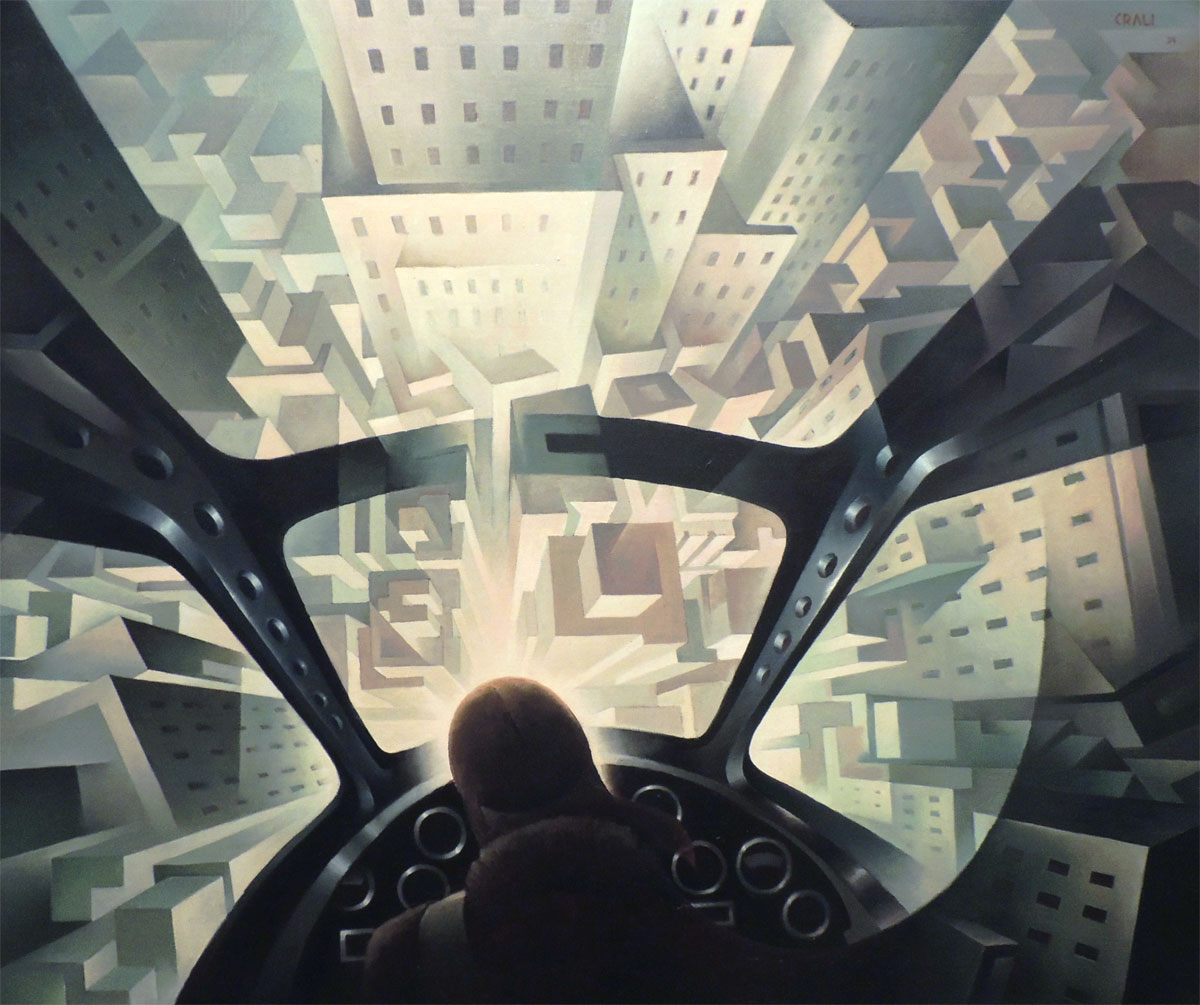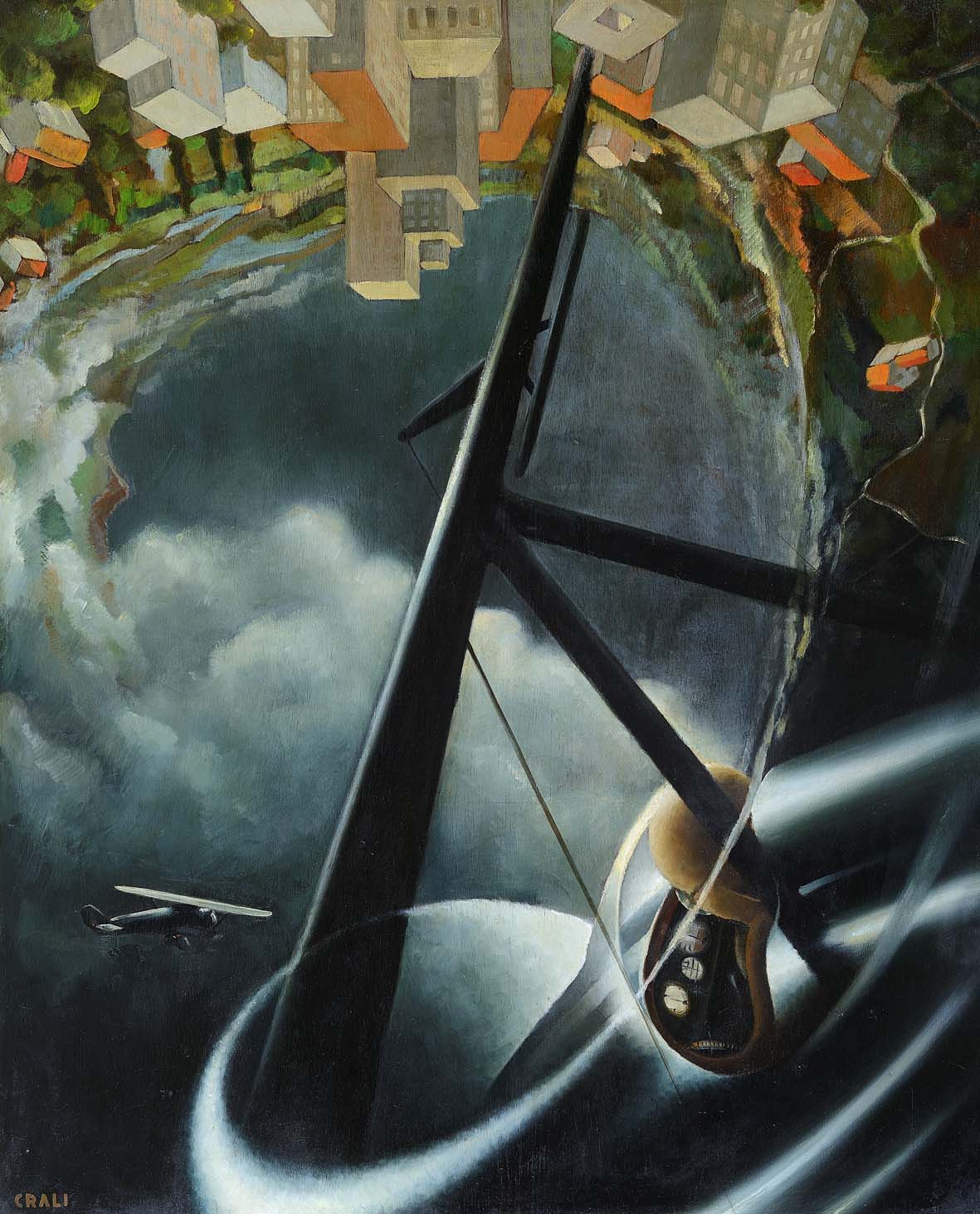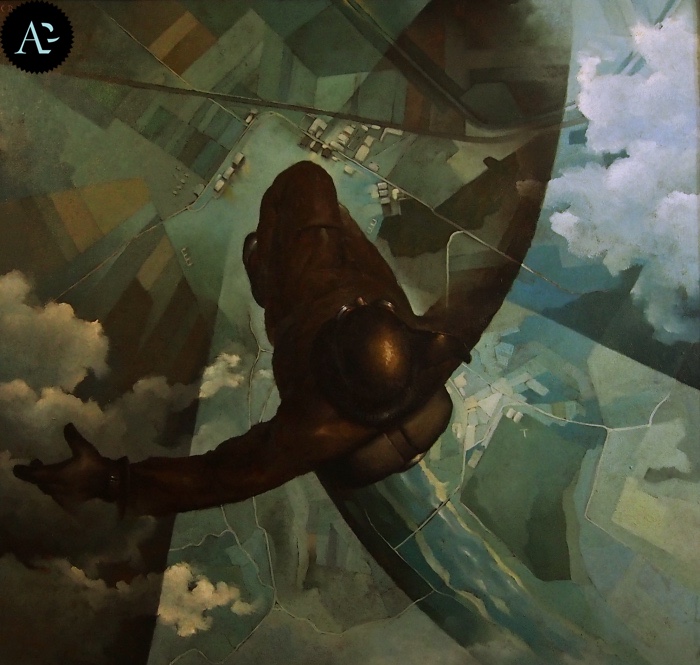
Tullio Crali, Incuneandosi nell’abitato. Tuffo sulla citta
Have you ever heard of Futurism and Aeropainting? More importantly, do you know the historical and cultural roots that gave birth to these revolutionary artistic movements?
As the 19th century came to a close in Italy in a climate of growing social unrest and authoritarian tension, Futurism was born as a cultural storm, ready to sweep everything away. This historical phase saw Italy undergoing rapid industrial development but also the challenges posed by infrastructural deficits and economic disparities, especially in the southern regions. Let us look together at the terrain on which aeropainting was born.
Futurism and Aeropainting: the artistic revolution that transformed the world

Tullio Crali – Aerocaccia I (Duello di caccia), 1936, olio su tavola, 80×100 cm
The historical context in which Futurism was born is that of the First World War. This is the time when war, battle but also boundless faith in the future provoked great tensions and present passions.
FILIPPO TOMMASO MARINETTI: THE PROPHET OF FUTURISM
Filippo Tommaso Marinetti was the catalyst for this artistic current, creating the Manifesto of Futurism.
Coming from a bourgeois family and moving to Milan, Marinetti used his status and wealth to promote Futurism, opting for Paris as the ‘theatre’ for his debut.
In a France already bubbling with avant-garde movements, its manifesto hurled a strong accusation against Italian cultural immobility. Futurism took the form of a cult of modernity, of machines, of speed, and even glorified war as a social purifier.
AESTHETICS AND IDEOLOGY: BEYOND PAINTING
The Futurist movement was not limited to art and literature; it extended its influence to music, theatre and even politics.
The ‘manifesto technique’, set out in documents such as the ‘Manifesto of Futurist Painters’ and the ‘Technical Manifesto’, advocated an aesthetic that favoured dynamism and movement, as opposed to academic and traditional forms.
At the centre of it all was the machine, seen as an extension of human strength and as a symbol of the industrial age. Futurism was, in a nutshell, a totalising movement that sought to reach the public through theatrical performances, rants and advertising campaigns.
‘Futurist Reconstruction of the Universe’ is a fundamental manifesto signed by artists Giacomo Balla and Fortunato Depero.
This document is essential to understanding the Futurist philosophy, as it aimed to reshape the entire artistic and material universe. It aimed to involve all aspects of everyday life, from architecture to painting, from sculpture to music, merging everything into a ‘plastic complex’, a multidisciplinary artistic object intended to involve all the senses.
AEROPAINTING
Aeropainting is a sub-genre of Futurism, which originated in Italy in the 1920s, after the conclusion of World War I. This artistic style focuses on the aeroplane as a symbol of freedom, a freedom that was denied for many years due to the war.
This art form breaks with traditional perspective, presenting elements in constant motion. In these works, details are deliberately omitted, leaving room for distorted and compressed figures.
The origin of Aeropainting is closely linked to the image of the aviator, the individual who enjoys boundless freedom and dominates the airspace.
This movement also has its own manifesto: Filippo Tommaso Marinetti’s ‘Manifesto dell’Aeropittura Futurista’, which first appeared in 1929 in the Gazzetta del Popolo.
The main objective of Aeropainting is to convey to the viewer the emotions and sensations experienced during flight, such as the vastness of space and the thrill of speed. One of the best known Aeropainting artists is Tullio Crali, who combined his passion for art with that for flight, including aerobatic flight.
Among his most famous works are ‘Incuneandosi nell’abitato’ of 1939, also known as ‘In tuffo sulla città’, and ‘Prima che si aprago il paracadute’, an oil on canvas of 1939 currently kept at the Gallery of Modern Art in Udine.

Tullio Crali, Prima che si apra il paracadute (1939). Casa Cavazzini
Aeropainting represents a fascinating and innovative chapter in the evolution of modern art and Italian Futurism. It goes beyond traditional artistic conventions to capture the dynamism, speed and, above all, the freedom embodied by flight and the machine age.
Although the historical context, marked by two world wars, had a significant impact on the course of Futurism,Aeropainting demonstrates how art can transcend temporal and spatial limits, offering a vision that challenges and enriches traditional perceptions of the world. Artists like Crali, faithful to their mission despite historical turbulence, are a testament to the resilience and continued relevance of Futurist ideals.

